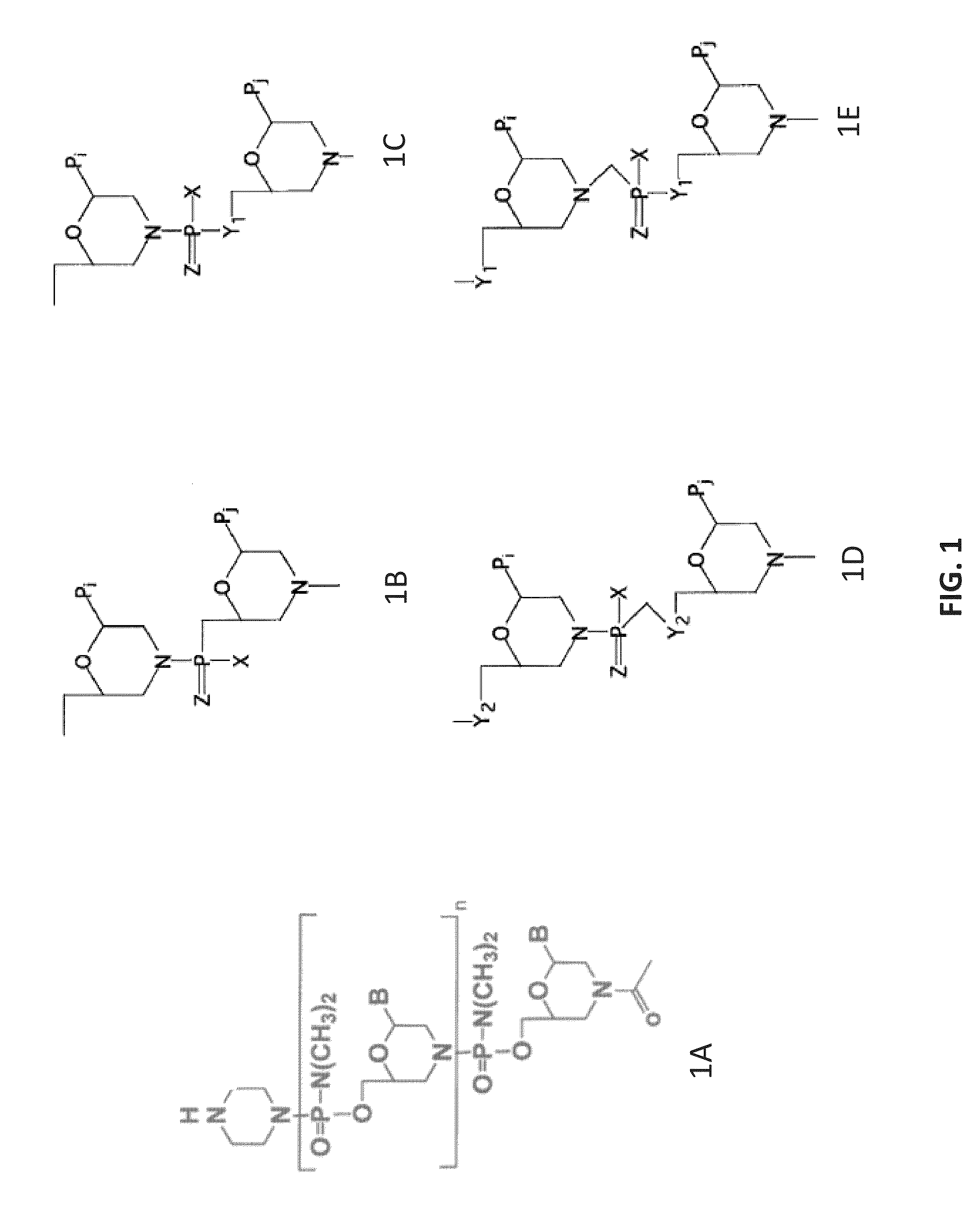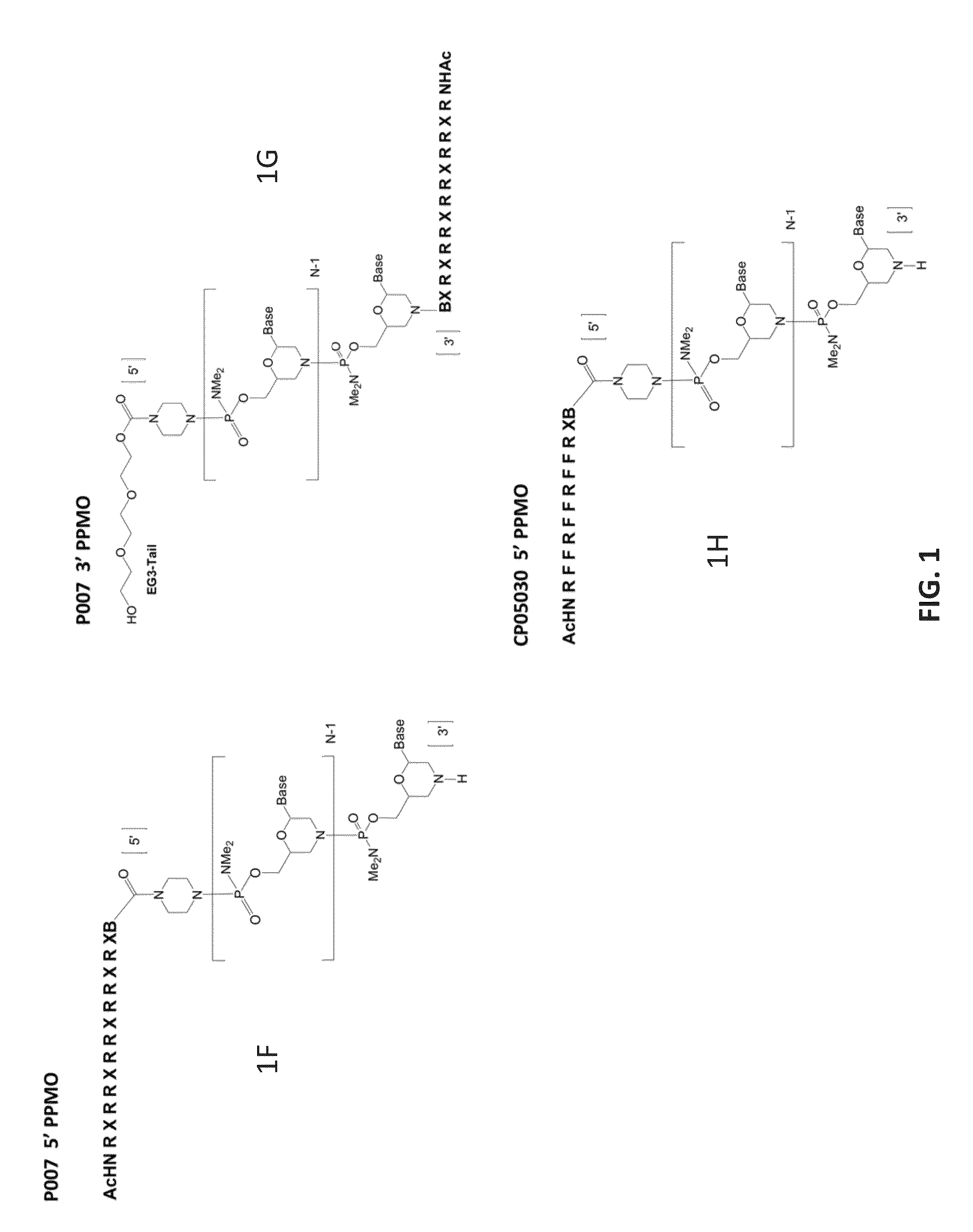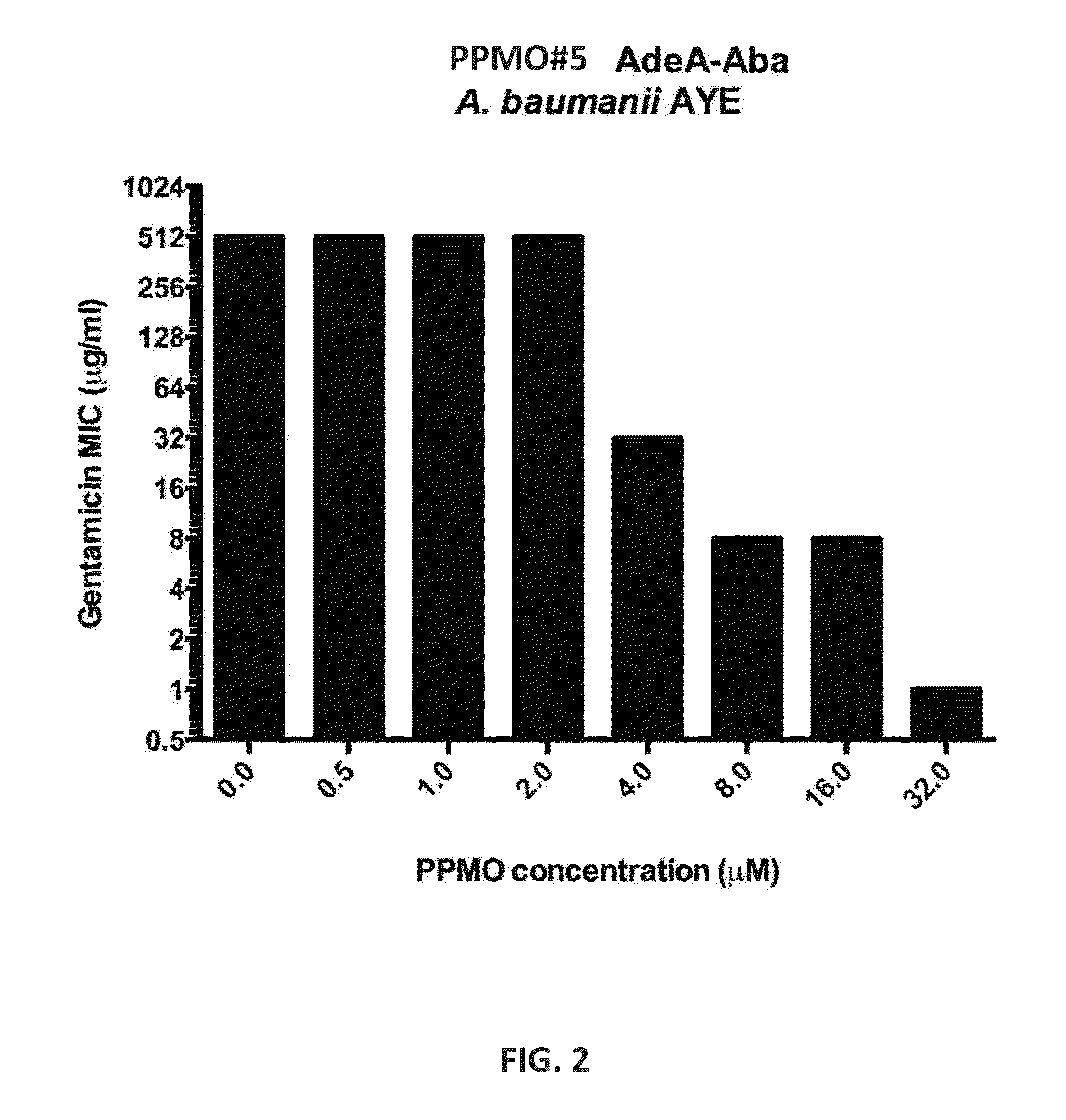Antisense antibacterial compounds and methods
a technology of morpholino oligomers and antibacterial compounds, applied in the direction of antibacterial agents, peptide/protein ingredients, activity regulation, etc., can solve the problems of antibiotic resistance, infection turns out to be untreatable, can develop into a chronic state, and down existing biofilms, so as to increase the susceptibility of otherwise antibiotic-resistant pathogenic bacteria to antibiotics, reduce the ability of certain pathogenic bacteria, and increase the susceptibility of antibiotics. resistant
- Summary
- Abstract
- Description
- Claims
- Application Information
AI Technical Summary
Benefits of technology
Problems solved by technology
Method used
Image
Examples
example 1
Activity of PPMOs Targeted Against adeA
[0275]A cell-penetrating peptide-conjugated phosphorodiamidate morpholino oligomer (PPMOs) targeted against the resistance-nodulation-cell division (RND)-type multidrug efflux pump subunit adeA (adeA) was prepared and tested for the ability to reduce the minimum inhibitory concentration (MIC) of various antibiotics against adeA-expressing Acinetobacter baumanii.
[0276]The adeA-targeted PPMO has the following sequence: ATACTGTCCAA (SEQ ID NO: 15; PPMO#5). The PPMO was conjugated at its 3′-end to the C-terminal β-alanine residue of (RXR)4XB (SEQ ID NO: 40).
[0277]The MIC of the antibiotics gentamicin, tobramycin, and tetracycline was measured using the microdilution method of the Clinical Laboratory Standards Institute in a 96-well microtiter plate format. Multiple, identical dilution series of each antibiotic were included on each microtiter plate. In each dilution series of antibiotic, a fixed amount of PPMO was added. Each dilution series of an...
example 2
Activity of PPMOs Targeted Against NDM-1
[0279]Peptide-conjugated phosphorodiamidate morpholino oligomers (PPMOs) targeted against the New Delhi metallo-beta-lactamase (NDM-1) were prepared and tested for the ability to reduce the minimum inhibitory concentration (MIC) of meropenem against NDM-1-expressing Acinetobacter baumanii and E. coli.
[0280]The NDM-1 targeted PPMOs have the following sequences: TCAAGTTTTCC (SEQ ID NO: 11; PPMO#1); TCCTTTTATTC (SEQ ID NO: 12; PPMO#2); CCATCAAGTTT (SEQ ID NO: 13; PPMO#3); and GGCAATTCCAT (SEQ ID NO: 14; PPMO#4). Each of the PPMOs was conjugated at its 3′-end to the C-terminal β-alanine residue of (RXR)4XB (SEQ ID NO: 40).
[0281]The MIC of meropenem was measured using the microdilution method of the Clinical Laboratory Standards Institute in a 96-well microtiter plate format. Multiple, identical dilution series of meropenem were included on each microtiter plate. In each dilution series of meropenem, a fixed amount of PPMO was added. Each dilution...
example 3
Activity of PPMOs Targeted Against Biofilm and Acyl Carrier Protein Genes
[0285]Peptide-conjugated phosphorodiamidate morpholino oligomers (PPMOs) targeted against the biofilm formation genes suhB and cepI and the acyl carrier protein acpP gene were prepared and tested for the ability to reduce biofilm formation and to break down established biofilm in Burkholderia cenocepacia J2315.
[0286]The suhB-targeted PPMOs have the following sequences: ATGCATGAGCC (SEQ ID NO: 23; PPMO#13); and GGATGCATGAG (SEQ ID NO: 24; PPMO#14).
[0287]The cepI-targeted PPMOs have the following sequences: AAGGTCTGCAT (SEQ ID NO: 16; PPMO#6); TCGGATCTGTG (SEQ ID NO: 17; PPMO#7); CATGGATGTCC (SEQ ID NO: 18; PPMO#8); CGTGAACGAAG (SEQ ID NO: 19; PPMO#9); CGTGTGGCAAC (SEQ ID NO: 20; PPMO#10); GCCCGAGATCC (SEQ ID NO: 21; PPMO#11); and CTTTCGTTCGC (SEQ ID NO: 22; PPMO#12).
[0288]Each of the suhB-targeted and cepI-targeted PPMOs was conjugated at its 3′-end to the C-terminal β-alanine residue of (RFF)3RXB (SEQ ID NO: 4...
PUM
| Property | Measurement | Unit |
|---|---|---|
| Fraction | aaaaa | aaaaa |
| Fraction | aaaaa | aaaaa |
| Electrical resistance | aaaaa | aaaaa |
Abstract
Description
Claims
Application Information
 Login to View More
Login to View More - R&D
- Intellectual Property
- Life Sciences
- Materials
- Tech Scout
- Unparalleled Data Quality
- Higher Quality Content
- 60% Fewer Hallucinations
Browse by: Latest US Patents, China's latest patents, Technical Efficacy Thesaurus, Application Domain, Technology Topic, Popular Technical Reports.
© 2025 PatSnap. All rights reserved.Legal|Privacy policy|Modern Slavery Act Transparency Statement|Sitemap|About US| Contact US: help@patsnap.com



